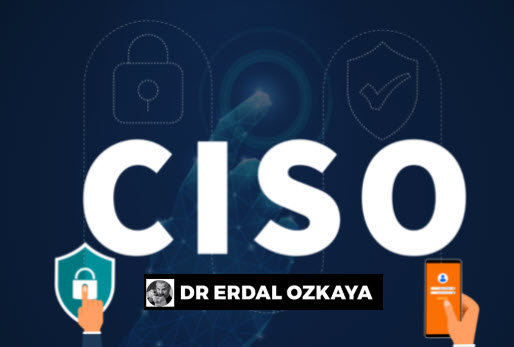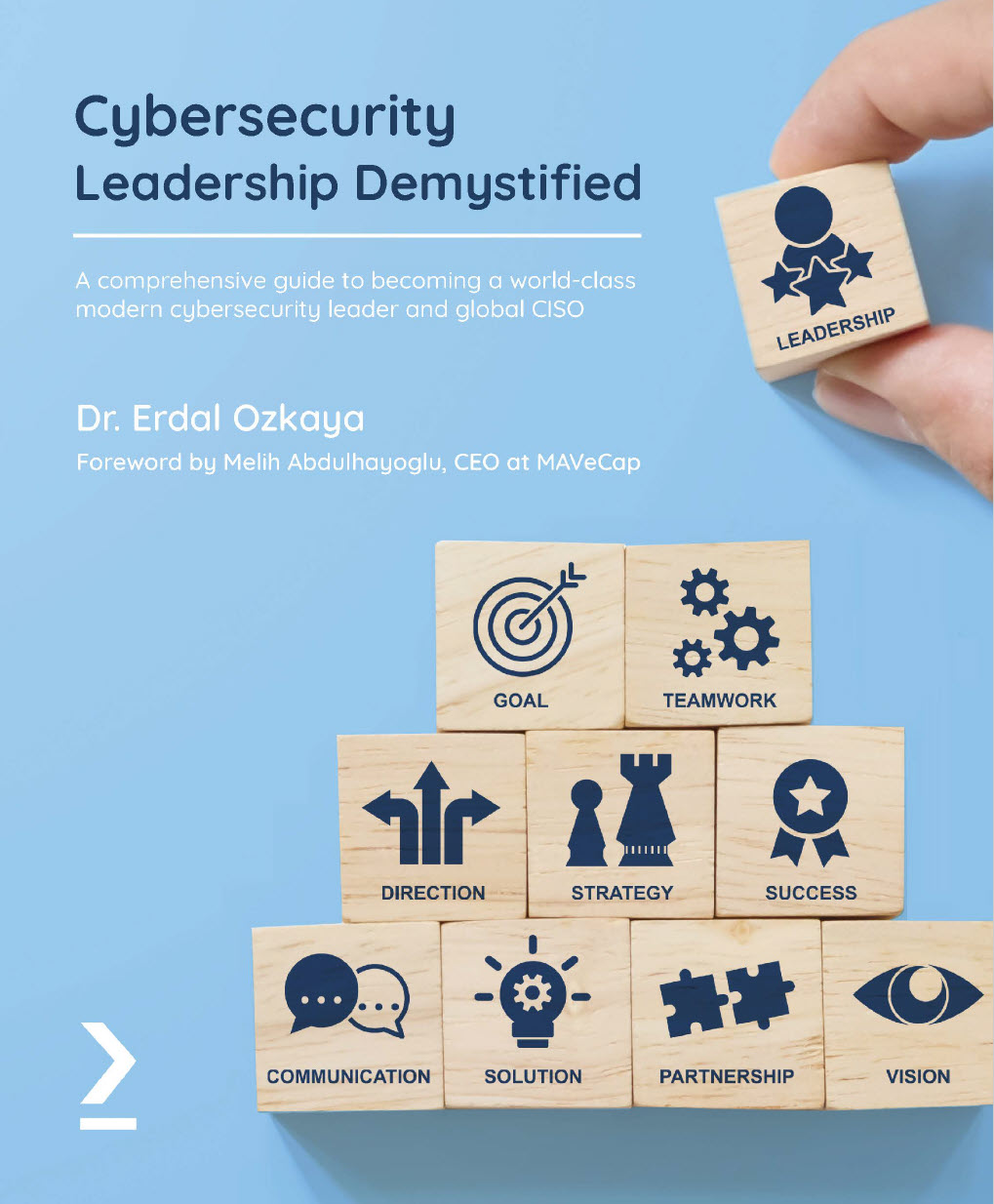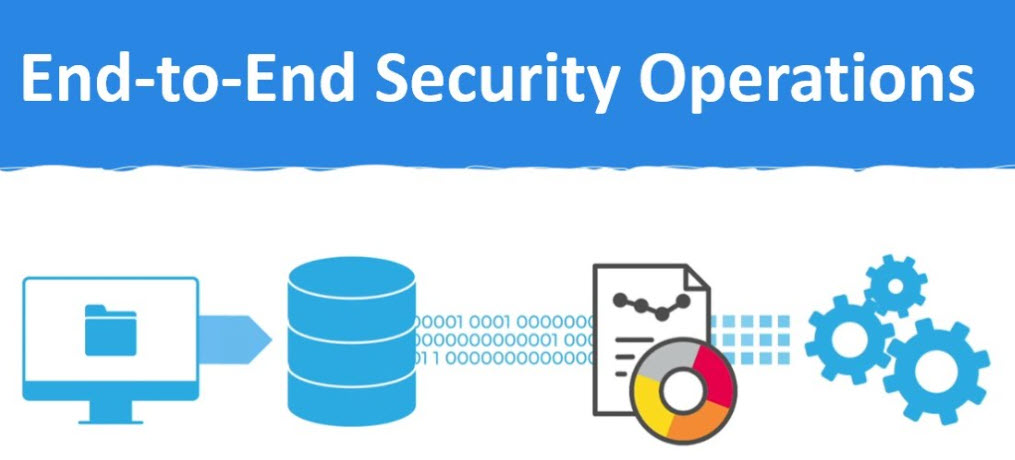
CISOs End to End Security Operations – ( Part 1)
CISOs End to End Security Operations
The Chief Information Security Officer (CISO) ensures the end-to-end (E2E) security operations of an organization. Together with their security team, they handle all security operations, enforce policies, and evaluate and address system vulnerabilities to ensure that a company’s information assets are safe from both internal and external threats.
This chapter will cover a typical day of a CISO and their E2E security operations and present the CISO activities that make up this security strategy. By the end of the chapter, you should be able to understand the reasons behind all the CISO and team’s security activities and why they need to address all sectors of an organization without neglecting any.
We will cover the following topics in this chapter, which also form a list of the main CISO roles in an organization:
- Evaluating the information technology (IT) threat landscape
- Devising policies and controls to reduce risk
- Leading auditing and compliance initiatives
- Managing information security initiatives
- Establishing partnerships with vendors and security experts
Evaluating the IT threat landscape
A CISO is responsible for company security, and the entire process begins with an evaluation of the threat landscape before implementing any tangible solutions. Evaluating the IT landscape helps reveal the various vulnerabilities present in a system and the various attack surfaces present in information assets that can be exploited by attackers. Threats to a company’s information assets may come from users who are authorized to use the system or from external attackers. The evaluation process needs to determine all the threats facing a company before it can determine avenues to address these vulnerabilities.
We have now addressed the need for CISOs to evaluate the threat landscape before they can brainstorm solutions to address identified issues. In the next section, we will look into the importance of CISOs gaining in-depth knowledge of company operations to create effective solutions.
Knowledge of company operations
An evaluation of the IT landscape of a company requires in-depth knowledge of the company’s operations. With the evolving nature of modern businesses, the duties of a CISO are also evolving, requiring them to have unrestricted access to all departments of a company. Accessing all sections of a company allows a CISO to thoroughly understand all company operations and enables them to perform an effective evaluation of all internal processes.
Attackers perform an exhaustive evaluation of a company’s system to find vulnerabilities. For CISOs to effectively counter such efforts, they also need to have a full view of a company’s systems and operations to determine all avenues and attack surfaces an attacker may use to infiltrate the company’s system.
Assessment tools
A CISO also needs specialized tools to conduct a thorough evaluation of a company’s systems. These specialized tools should be sourced from proven vendors who trade in network tools for system evaluation purposes. These tools aid a CISO in the assessment of a system including penetration testing and other ethical hacking processes. The result of penetration testing is a report that establishes all attack surfaces as well as revealing all possible vulnerabilities that can be exploited by attackers.
Internal evaluation of the threat landscape also encompasses an evaluation of a company’s own internal control mechanisms in place to protect a company’s information assets. A CISO needs to objectively evaluate a company’s internal controls that are meant to safeguard the company’s system from attacks. These controls apply to both external threats and internal threats.
To ensure the effectiveness of the threat landscape evaluation, the internal processes should be evaluated with the standards of external vulnerability assessments. In many cases, companies tend to be complacent about internal systems where company employees are involved. However, reports continue to show that disgruntled employees are one of the leading causes of cyber threats to organizations.
Trends in cyber threats
Understanding trends in cyber threats is an important skill for all CISOs. The IT sector is ever evolving. New attack vectors keep coming up, and CISOs need to be updated about current trends in the IT sector as this will enable them to have an understanding of all the threats they are likely to face and take measures to mitigate such threats. An organization needs to be safeguarded from all common attack vectors as a minimum requirement. Since security mechanisms get outdated quickly, CISOs must keep abreast of changes in the threat landscape. Continuous improvement of skills and knowledge are key traits of an effective CISO in the current times.
This section has addressed the important role of evaluating the cyber threat landscape. The next section will address the role of devising policies and security controls as measures to keep a company safe from threats.
Devising policies and controls to reduce risk
To ensure E2E security in an organization, a CISO is tasked with devising policies and setting up security controls to help mitigate any threats facing a company. The CISO role is an executive role in the management sphere and should have the influence to create policies that safeguard a company’s operations. These policies affect a company’s internal operations and mainly focus on the company’s staff members.
A CISO also reviews all interactions of all users within a system and the threat level from all these users. These users also include vendors of all software used within an organization. Some vendors may not be trustworthy and may provide an organization with software that is insecure or that has unaddressed security patches unknown to buyers.
We now have an idea of how security leaders devise security policies and controls in the implementation of their security functions. The next section highlights some of the internal staff policies developed by the security team.
Internal staff policies
Internal staff can be supportive in helping a company address internal threats. Staff members should be subjected to security controls that ensure that they do not have unlimited access to information assets within an organization. Access to information should be on a need-to-know basis to allow them to perform their functions effectively. Database administrators, who are part of the team that works directly under the CISO in an organization, are tasked with assigning privileges in the accessing of information within a company.
These restrictions should be strictly reinforced. If an employee is terminated from an organization, their access privileges should be revoked immediately. Disgruntled employees are a known source of internal threats to an organization and have the capability to do major damage to a company’s information assets.
Internal policies should be printed and pinned on a board where all employees can access them for reference to remind them of all the security policies. This should include the consequences of failing to adhere to these security policies. Consequences should be in the form of termination, fines, suspension, or legal action against employees violating these policies.
These policies should be reviewed regularly to ensure that they continue to effectively safeguard internal operations and ultimately safeguard the company’s information assets. In addition, the security team should ensure that employees respect these security policies and thus develop a culture of security. Employee culture is an integral factor in the implementation of security policies. While internal policies should be meant to safeguard company operations, they should not make staff members’ execution of their duties unnecessarily difficult.

Other company policies
Aside from internal staff policies, CISOs also create policies that affect customers and other people that interact with the company, such as vendors. The main security policies that safeguard a company’s information assets from non-staff members come in the form of physical security controls. Organizations will restrict sections of the company from customers and other non-staff members as a form of basic security control to limit the access of unauthorized people to sensitive information assets or simple theft.
These are usually implemented through the use of security cards to access some rooms meant for staff only. These security cards can also have privilege access controls to limit even junior staff members from accessing rooms meant for only senior or authorized personnel. The security team is tasked with devising these security policies and continually reviewing them to ensure that they are effective in enforcing security measures within a company’s premises.
We have addressed how a CISO devises policies and security controls to keep a company safe. The next section handles the role of auditing a company and ensuring it is compliant with laws and regulations, as the security controls must be able to enforce compliance.
Part 2 will be soon in this blog , so please keep visiting 🙂 If you don’t want to wait then you can go ahead and buy my new book, as this article has been taken from my latest book called Cybersecurity Leadership Demystified
About Cybersecurity Leadership Demystified
A comprehensive guide to becoming a world-class modern cybersecurity leader and global CISO
Key Features:
- Discover tips and expert advice from the leading CISO and author of many cybersecurity books
- Become well-versed with a CISO’s day-to-day responsibilities and learn how to perform them with ease
- Understand real-world challenges faced by a CISO and find out the best way to solve them
Book Description:
The chief information security officer (CISO) is responsible for an organization’s information and data security. The CISO’s role is challenging as it demands a solid technical foundation as well as effective communication skills. This book is for busy cybersecurity leaders and executives looking to gain deep insights into the domains important for becoming a competent cybersecurity leader.
The book begins by introducing you to the CISO’s role, where you’ll learn key definitions, explore the responsibilities involved, and understand how you can become an efficient CISO. You’ll then be taken through end-to-end security operations and compliance standards to help you get to grips with the security landscape. In order to be a good leader, you’ll need a good team.
This book guides you in building your dream team by familiarizing you with HR management, documentation, and stakeholder onboarding. Despite taking all that care, you might still fall prey to cyber attacks; this book will show you how to quickly respond to an incident to help your organization minimize losses, decrease vulnerabilities, and rebuild services and processes. Finally, you’ll explore other key CISO skills that’ll help you communicate at both senior and operational levels.
By the end of this book, you’ll have gained a complete understanding of the CISO’s role and be ready to advance your career.
What You Will Learn:
- Understand the key requirements to become a successful CISO
- Explore the cybersecurity landscape and get to grips with end-to-end security operations
- Assimilate compliance standards, governance, and security frameworks
- Find out how to hire the right talent and manage hiring procedures and budget
- Document the approaches and processes for HR, compliance, and related domains
- Familiarize yourself with incident response, disaster recovery, and business continuity
- Get the hang of tasks and skills other than hardcore security operations

Who this book is for:
This book is for aspiring as well as existing CISOs. This book will also help cybersecurity leaders and security professionals understand leadership in this domain and motivate them to become leaders. A clear understanding of cybersecurity posture and a few years of experience as a cybersecurity professional will help you to get the most out of this book.
To order from Amazon click here :
To order from Packt :
To order from Amazon Australia
To order from Google Books
To order from Adlibris
End to End Security Operations





